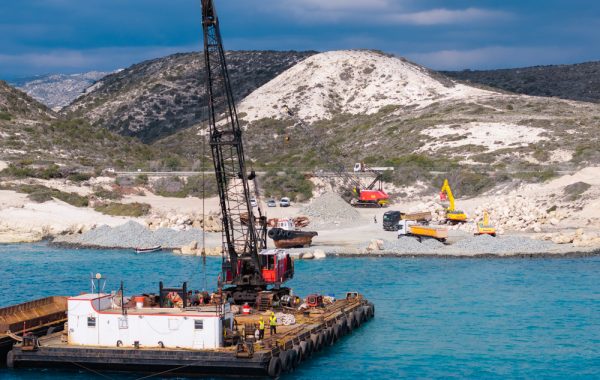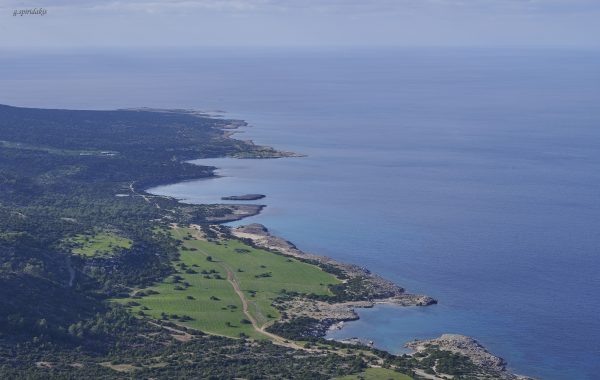Can you guess how many Natura 2000 sites there are in Cyprus?
A whopping 63 Natura 2000 sites! These include both marine and terrestrial sites, with a total area of 1,789 km2. But the key question here is, how many of these are actually properly managed and protected? Hardly any, is the answer…
BirdLife Cyprus, together with 14 other partners (see below) is participating in a new LIFE Integrated Project that aims to plug this gap. The new project is called LIFE IP Physis and is dedicated to the protection and the proper management of all of our Natura 2000 sites.
What is LIFE IP Physis?
A European “LIFE IP” project means an Integrated Project that is funded by the LIFE programme. Integrated Projects are about the bigger picture in the long term, providing funding for plans, programmes and strategies developed on the regional, multi-regional or national level and allowing Member States to make use of other EU funding sources. For the LIFE IP Physis this means that our actions will take place on a much bigger territorial scale than other projects. The new LIFE IP Physis project aims to come up with better management plans for the whole Natura 2000 network on the island. Management plans can be anything from creating artificial islands inside a wetland so that bird eggs or chicks do not get predated by predators such as foxes or stray cats, control of invasive species that threaten an area’s biodiversity or installing nest boxes to encourage the breeding of certain birds such as the Barn Owl as a measure of pest control in farmlands.
This is the first time a project of this scale will be implemented in Cyprus. This is very exciting news for us, no matter how challenging this project will be to implement, especially when we consider the state of some of our most precious natural areas, such as Paralimni Lake in recent years and the bad news of Flamingo deaths at Larnaka Salt Lakes, both Natura 2000 sites. Paralimni Lake continues to be a prime example of a badly-managed Natura 2000 site in Cyprus. Despite being home to many protected species, including the sub-endemic rare grass snake Natrix natrix cypriaca, Paralimni Lake suffers from disturbance and degradation due to uncontrolled access, uncontrolled draining, poaching and illegal trapping activities, dumping of waste and other materials, while pressure grows for residential development around and within the Lake. In Larnaka Salt Lake, since the beginning of 2020, over 60 dead flamingos died due to lead poisoning. The presence of lead at Larnaka Salt Lakes years after the closure of the shooting range that used to exist there and the cleaning of the Salt Lake demonstrates the urgent need of management of the area, not only to permanently remove the remaining lead from the wetland, but also to tackle persistent problems that continue to degrade the site such as the presence of waste water, the large number of stray cats and disturbance to birds.

In addition, IP projects bring together many stakeholders and experts who share their knowledge and network for a common goal, in this case better protection of all 63 Natura 2000 sites, across the whole of Cyprus. To achieve this, BirdLife Cyprus will partner up with 14 other institutions and NGOs.
During this project we will also communicate and consult with all relevant stakeholders, for example farmers, fishermen, hunters, hotel owners, tourist agents, land owners, local authorities, industrialists, policing authorities and judges.
Our key involvement in the project will be to conduct fundamental research to fill in the gaps about some bird species and their habitats, as well as raising awareness about those and the threats that they are facing. The research goals of this project, are among others, to fill in gaps about basic ecological facts and quantify the threats about some breeding and migrating birds. Knowing more about our birds and their habitats, will enable us to come up with innovative solutions on how to better protect them and make sure future generations can enjoy them as well.
Furthermore, together with competent authorities we aim to come up with a management plan for those important nature sites and also compile species and habitat national action plans for threatened animal and plant species.
The Natura 2000 network is the largest network of protected areas in the world, created to protect our most beloved wildlife and unique landscapes. Our hope is that with this ambitious new project, our Natura 2000 areas will get the TLC they deserve.
Partners:
- Coordinating – Department of Environment, Ministry of Agriculture, Rural Development and Environment, Cyprus (DE)
- Department of Forests, Ministry of Agriculture, Rural Development and Environment, Cyprus (DF)
- Game and Fauna Service, Ministry of Interior, Cyprus (GFS)
- BirdLife Cyprus, Cyprus (BC)
- Terra Cypria, Cyprus (TC)
- University of Cyprus (OUC)
- Frederick University, Cyprus (FU)
- Cyprus Wildlife Society (CWS)
- Federation of Environmental Organisations of Cyprus (FEOC)
- ACC Perivallon kai Kainotomia Limited (ACC)
- I.A.CO. Environmental & Water Consultants Limited (IACO)
- National and Kapodistrian University of Athens (NKUA)
- Department of Fisheries and Marine Research, Ministry of Agriculture, Rural Development and Environment, Cyprus (DFMR)
- Cyprus University of Technology (CUT)
- AP Marine Environmental Consultancy Ltd (AP)




